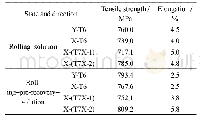《Table 1 NC-based cartilage TE scaffolds with different processing methods》
 提示:宽带有限、当前游客访问压缩模式
提示:宽带有限、当前游客访问压缩模式
本系列图表出处文件名:随高清版一同展现
《Advances in Hard Tissue Engineering Materials——Nanocellulose-based Composites》
Further,bio-elastic lubricating films of NFC and hyaluronic acid(HA)were developed,which showed appealing applications in cartilage implants[27].The NFC dispersion was spin-coated on gold-plated quartz crystals to prepare thin films,and HA was covalently bonded to NFC membranes by esterification reaction,which improved the poor lubricating properties of the NFC membranes.In addition,the hydrogels were synthesized by forming a network of poly(2-hydroxyethyl methacrylate)(PHEMA) matrix enhanced with cellulose whiskers[28].The hydrogels had enhanced toughness,increased viscoelasticity,and improved recovery behavior,which could be used for articular cartilage replacement.The applications of NC-based cartilage TE scaffolds are summarized in Table 1.
| 图表编号 | XD0020755500 严禁用于非法目的 |
|---|---|
| 绘制时间 | 2018.10.01 |
| 作者 | HuiZe Luo、JuanJuan Li、FengShan Zhou |
| 绘制单位 | Beijing Key Laboratory of Materials Utilization of Nonmetallic Minerals and Solid Wastes, National Laboratory of Mineral Materials, School of Materials Science and Technology, China University of Geosciences (Beijing)、Beijing Key Laboratory of Materials U |
| 更多格式 | 高清、无水印(增值服务) |
查看“Table 1 NC-based cartilage TE scaffolds with different processing methods”的人还看了
-

- Table 1A comparison of the conventional drug discovery and development process with those of the CAR-based living drug.





